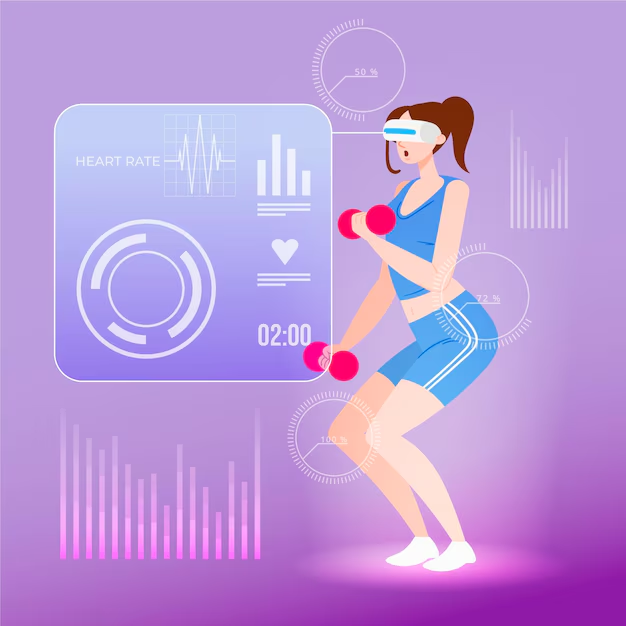
In today’s digital age, the pursuit of health and fitness has increasingly moved into the virtual realm. With the rise of technology, tools and platforms designed to aid in weight management and muscle health have become more accessible and effective. One such innovation is the Power Platform, which leverages technology to enhance virtual weight loss programs and monitor muscle mass loss effectively.
Understanding Virtual Weight Loss
Virtual weight loss programs have gained traction due to their flexibility and accessibility. These programs often include online coaching, virtual workout sessions, and nutrition tracking through mobile apps and websites. The convenience of participating in a weight loss program from the comfort of your home allows individuals to engage with their health goals without the constraints of traditional gym settings or the stigma sometimes associated with in-person weight loss groups.
Virtual weight loss programs often combine various strategies, including personalized meal plans, exercise routines, and behavioral therapy. By using a virtual platform, users can easily track their progress, receive real-time feedback, and adapt their plans based on their performance. This level of interaction and personalization is crucial for maintaining motivation and accountability.
The Role of the Power Platform
The Power Platform refers to a suite of tools developed by Microsoft, which includes Power BI, Power Apps, Power Automate, and Power Virtual Agents. These tools enable users to analyze data, create custom applications, automate workflows, and build intelligent chatbots. By integrating these capabilities into virtual weight loss programs, health coaches and nutritionists can enhance user experience and outcomes significantly.
- Data Analysis with Power BI: One of the primary challenges in weight loss is understanding the various factors affecting progress. Power BI allows health professionals to visualize data related to clients’ weight loss journeys, including caloric intake, exercise frequency, and muscle mass changes. By analyzing this data, coaches can identify trends, pinpoint challenges, and tailor strategies to meet individual needs.
- Custom Applications via Power Apps: Creating a user-friendly app for clients can streamline the weight loss process. Power Apps enables the development of custom applications that can track food intake, exercise logs, and progress pictures. These apps can also incorporate reminders and motivational messages, which help keep users engaged and accountable.
- Automated Workflows with Power Automate: Staying organized is crucial for anyone on a weight loss journey. Power Automate can simplify scheduling workouts, tracking meals, and sending reminders for important health-related tasks. By automating these workflows, users can focus more on their journey rather than getting bogged down by administrative tasks.
- Interactive Support with Power Virtual Agents: One of the significant benefits of virtual weight loss programs is the ability to connect with health coaches or nutritionists. Using Power Virtual Agents, health professionals can create chatbots that provide instant support, answer common questions, and offer motivational tips. This 24/7 support can make a substantial difference in user adherence and motivation.
Addressing Muscle Mass Loss
A significant concern for those engaged in weight loss is muscle mass loss. Traditional dieting approaches can lead to muscle deterioration, particularly if the weight loss is rapid or not adequately monitored. Understanding the delicate balance between losing fat and preserving muscle is crucial for anyone looking to improve their overall health and physique.
- Nutritional Strategies: Effective weight loss requires a careful approach to nutrition. A diet that is too restrictive may lead to muscle loss. Instead, incorporating sufficient protein and ensuring a balanced intake of macronutrients can help mitigate this risk. Virtual platforms can provide personalized meal plans that focus on high-protein foods, healthy fats, and complex carbohydrates to support muscle maintenance.
- Strength Training: Alongside dietary adjustments, strength training is essential in preventing muscle mass loss during weight loss. Virtual workout programs can integrate strength training routines that users can follow from home or at the gym. By combining these workouts with nutritional strategies, users can optimize their weight loss efforts while preserving muscle mass.
- Regular Monitoring: Monitoring body composition is vital to understanding changes in muscle mass. Tools integrated into the Power Platform can allow users to track not only their weight but also their muscle mass. Regular assessments can help adjust dietary and exercise programs in real time, ensuring that users stay on track and make informed decisions about their health.
The Importance of Community and Support
While technology plays a pivotal role in Muscle mass loss and muscle mass management, the human element remains crucial. Community support can enhance motivation and accountability. Many virtual platforms incorporate social features that allow users to connect, share their journeys, and encourage one another. Whether through forums, social media groups, or in-app messaging, fostering a sense of community can significantly impact user success.
Conclusion
The integration of the Power Platform into virtual weight loss programs represents a significant advancement in health and fitness technology. By utilizing tools like Power BI, Power Apps, Power Automate, and Power Virtual Agents, users can achieve their weight loss goals while preserving muscle mass more effectively. As the landscape of health and fitness continues to evolve, the potential for these technologies to transform how individuals approach weight management and muscle health is immense.
Incorporating these innovative solutions not only makes weight loss more accessible but also provides individuals with the resources and support they need to succeed in their journeys. Ultimately, the combination of technology and community can empower users to achieve lasting health improvements, creating a sustainable lifestyle rather than a temporary fix.